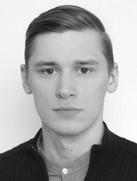Wavelike strength training components in volleyball training micro-cycles
Фотографии:
ˑ:
Postgraduate A.V. Losev1
1Surgut State University, Surgut
Objective of the study was to rate benefits of the wavelike strength training components in volleyball training micro-cycles by comparative analysis of the pre-and post-training strength rates, with the 8-week training including daily and weekly wavelike intensity variation periods. Subject to the study were 20 volleyball players split up into two groups. Group 1 and Group 2 were trained as required by the daily and weekly wavelike intensity variation models, respectively. The strength building progress was rated by a single-attempt maximum (SAM) test, with the trainees making SAM in the following exercises: leg press; Scott bench press; training simulator assisted legs flexions; training simulator assisted legs extensions; bench press; and arms extension sitting on crossover. Every trainee was offered 3 attempts to find the best weight in each test, with the individual best result registered. The study data showed benefits of the daily and weekly strength training intensity variations as verified by the progress made in the tests. The strength progress due to the weighted training practices was particularly high at the beginner stage (weeks 1 through 4) as a result of the neuron adaptation with (1) expansion of the motor units employed; (2) growing frequency of the impulses; and (3) improvements in the inter-muscular coordination patterns. Later on (weeks 5 through 8), the strength building progress was secured by the muscle growth process.
Keywords: strength training, training, volleyball, periodization.
References
- Verkhoshanskiy Yu.V., Mironenko I.N., Antonov T.M. Nekotorye printsipy postroeniya trenirovki v godichnom tsikle v skorostno-silovykh vidakh sporta. Problemy optimizatsii trenirovochnogo protsessa. Sb. nauch. tr. [Some principles of workout design in annual cycle in speed-strength sports]. Moscow, 1982, pp. 50-81.
- Verkhoshanskiy Yu.V. Osnovy spetsialnoy fizicheskoy podgotovki sportsmenov [Fundamentals of special physical training for athletes]. Moscow: Fizkultura i sport publ., 1988, 331 p.
- Kots Ya.M. Sportivnaya fiziologiya [Sports physiology]. Moscow: Fizkultura i sport publ., 1986, 420 p.
- Matveyev L.P. Problemy periodizatsii sportivnoy trenirovki [Problem of periodization of sports training]. Moscow: Fizkultura i sport publ., 1964, 244 p.
- Baker D., Wilson G., et al. Periodization: the effect on strength of manipulating volume and intensity. The Journal of Strength & Conditioning Research. 1994; 8(4): 235-242.
- Fleck S.J., Kraemer W. Designing Resistance Training Programs, 4E, Human Kinetics. 2014.
- Hartmann H., Bob A, et al. Effects of different periodization models on rate of force development and power ability of the upper extremity. The Journal of Strength & Conditioning Research. 2009; 23(7): 1921-1932.
- Kraemer W.J., Ratamess N.A. Fundamentals of resistance training: progression and exercise prescription. Medicine and science in sports and exercise. 2004; 36(4): 674-688.
- Marques M.A.C., González-Badillo J.J., et al. In-Season Resistance Training for Professional Male Volleyball Players. Strength & Conditioning Journal. 2006; 28(6): 16-27.
- Poliquin C. Football: Five steps to increasing the effectiveness of your strength training program. Strength & Conditioning Journal. 1988; 10(3): 34-39.
- Rhea M.R., Alderman B.L. A meta-analysis of periodized versus nonperiodized strength and power training programs. Research quarterly for exercise and sport. 2004; 75(4): 413-422.
- Rhea M.R., Ball S.D., et al. A comparison of linear and daily undulating periodized programs with equated volume and intensity for strength. The Journal of Strength & Conditioning Research. 2002; 16(2): 250-255.


